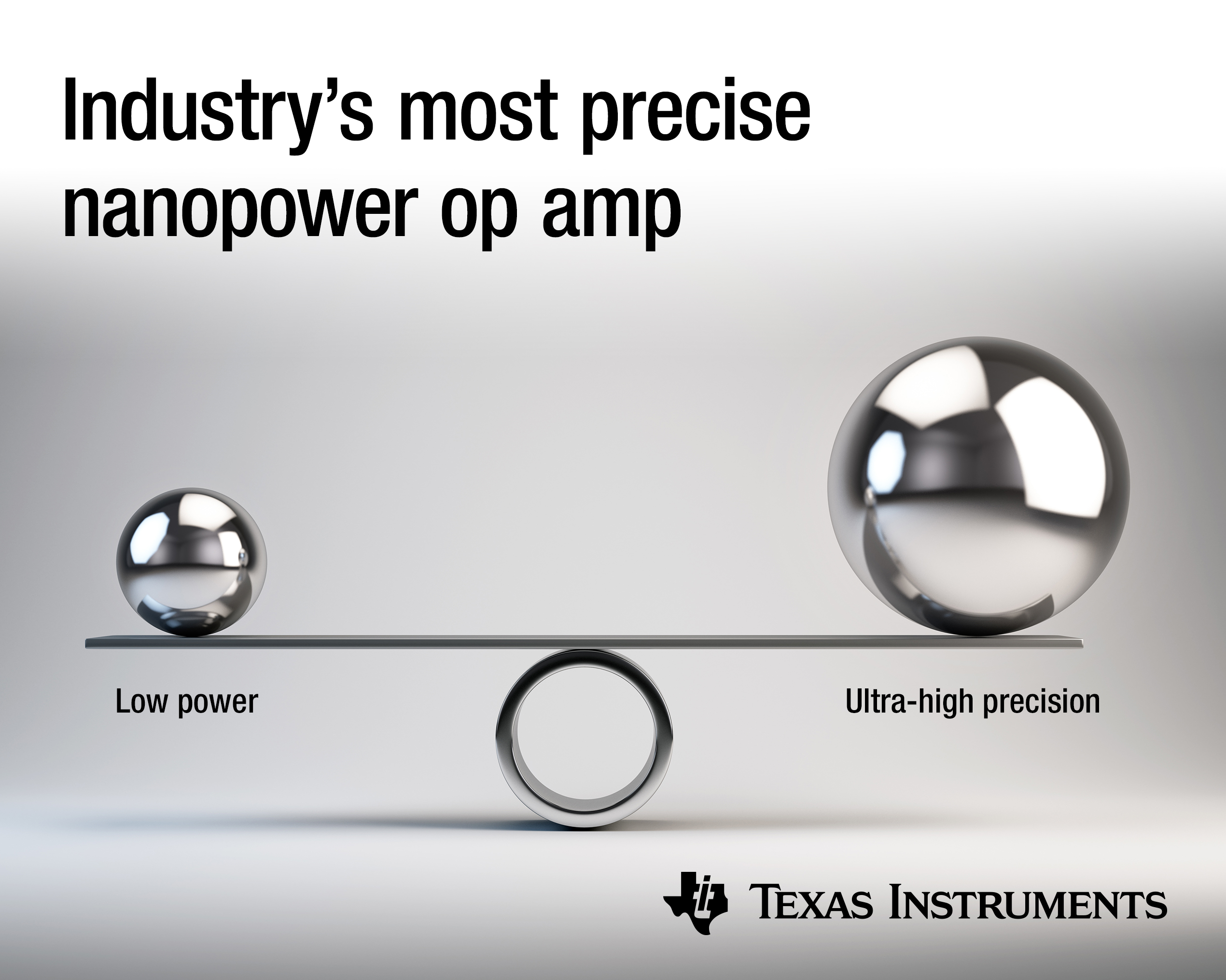TI delivers the most precise nanopower op amp, reducing system power and maximizing battery life in precision IoT, industrial and personal electronics applications
DALLAS (December 6, 2017) – Texas Instruments (TI) (NASDAQ: TXN) today introduced the first operational amplifier (op amp) to combine ultra-high precision with the industry’s lowest supply current. With exceptional power-to-precision performance, the LPV821 zero-drift, nanopower op amp enables engineers to attain the highest DC precision, while consuming 60 percent less power than competitive zero-drift devices. The LPV821 is designed for use in precision applications such as wireless sensing nodes, home and factory automation equipment, and portable electronics. For more information, see www.TI.com/LPV821-pr-eu.
The LPV821 op amp is the newest device in TI’s low-power amplifier portfolio, which enables engineers to design lighter, smaller and more portable applications with lower-capacity batteries and longer system lifetimes.
Key features and benefits of the LPV821 op amp
- Exceptional power-to-precision performance: Consuming only nanoamps of supply current, while providing the high-precision benefits of optimized offset, drift and 1/f noise (flicker noise), the LPV821 is extremely beneficial for applications where both precision and low power are essential system needs, including industrial gas detectors, field transmitters and battery packs.
- Sixty percent lower power consumption: With best-in-class supply current of 650 nA, the LPV821 extends battery lifetimes and enables lower power budgets in precision systems than competitive zero-drift devices.
- High DC precision: TI’s zero-drift technology delivers a low initial offset of 10 µV and an offset drift of 0.02 µV/°C, eliminating temperature drift and flicker noise, and enabling engineers to attain the highest DC precision and dynamic error correction. Additionally, self-calibration technology helps engineers save system development cost and speed time to market.
- No duty cycling: Nanopower consumption enables always-on applications such as continuous and blood glucose monitoring, and other electrochemical cell applications. Additionally, the low supply current decreases the external circuitry required to turn the amplifier on and off.
- High-impedance sensor operation: An input bias current of 7 pA and low flicker noise at 3.9 µVp-p enables operation with high-impedance sensors, delivering more accurate measurements in precision systems.



















